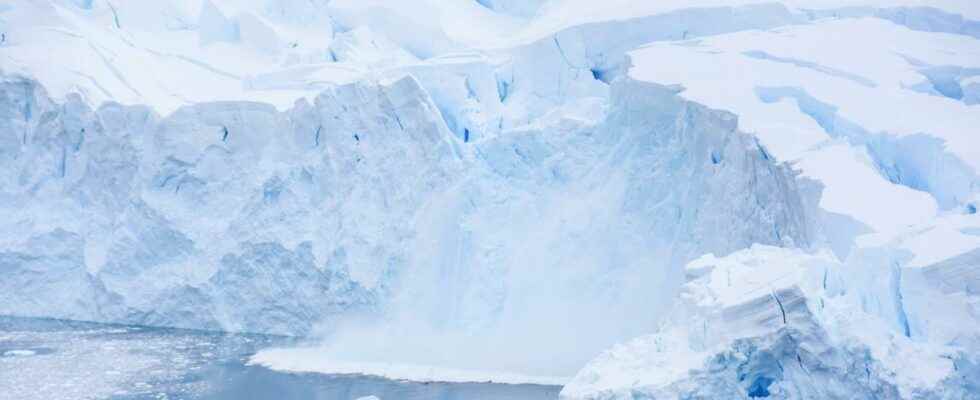Since 1979, scientists have had very precise measurements of the extent of the ice floes at the North and South Poles thanks to satellites.
Antarctic sea ice last month reached its smallest July area on record in 44 years of satellite records, the European climate change service Copernicus has warned, confirming an alarming year.
Since 1979, scientists have had very precise measurements of the extent of the ice floes at the North and South Poles thanks to satellites. Sea ice is the ice that floats on the ocean; its melting therefore does not raise sea levels, but it indirectly contributes to global warming, as the open ocean absorbs more heat. The normal cycle of sea ice, in the Arctic as in Antarctica, is that it melts in summer and re-forms in winter. In the long term, the melting is rapid in Greenland and the Arctic, but conversely, in the Antarctic, the trend was modestly increasing, despite significant annual and regional variations, without the exact understanding of the phenomenon.
Read alsoThe melting of the Arctic sea ice weakens the polar bear
SEE ALSO – STORY_REPORTAGE_VJ_ANTARCTICA_
The Antarctic sea ice had only reformed in July (winter in the southern hemisphere), only over an average of 15.3 million square kilometers, or 1.1 million km2 less (-7%) than the average for this month between 1991 and 2020, Copernicus (C3S) scientists found. At the end of the austral summer, in February, the sea ice had shrunk to its historic low, panicking scientists. It was 30% smaller than the three-decade average between 1981 and 2010. Since February, it had remained below season averages, according to C3S. And in June already, it had reached its historic low for the month.
Read also“Ice melting is accelerating in all regions of the planet»
In the Arctic, sea ice extent was 4% below average in July, according to Copernicus, the 12th lowest extent on record for July. Illustrating the imperfect understanding of the warming phenomenon in Antarctica, Copernicus recalls that the sea ice there was conversely above average a year ago, in July 2021. 2022 is a year of climatic records in the world. July was one of the three hottest on record in the world, according to the World Meteorological Organization (WMO), a UN specialized agency based in Geneva.
Read alsoJuly 2022, one of the hottest months on record worldwide
SEE ALSO – Arctic: summer sea ice at the second lowest level ever observed
